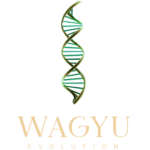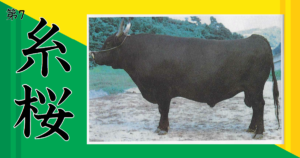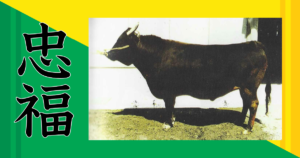Introducing Itomichi : Primary Herd Sire at Takeda Farms
Table of Contents
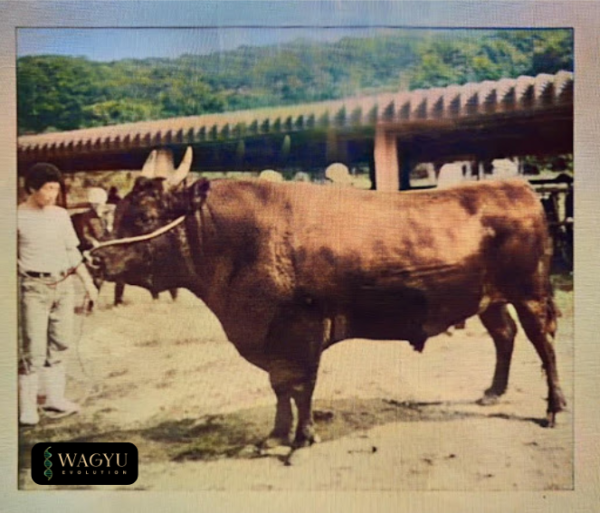
Itomichi, a name that resonates throughout the Wagyu cattle breeding industry, stands as a testament to excellence. His official date of birth is unknown; this Fullblood Black Wagyu bull was the primary herd sire at Takeda Farms leaving an indelible mark on it and the global Wagyu genetics landscape.
Okoyama/ Shimane Wagyu origins
The northern part of Okayama Prefecture, where Wagyu cattle originated, retains remnants of old rural life. Various regions in the Chugoku Mountains, including Tanshima in Hyogo, Toma District in Okayama, Yazu District in Tottori, and Atetsu in Maniwa District, have distinct Wagyu varieties.
Bamboo Valley in Kagami-cho, Atetsu District, established the ‘Bamboo Valley Vine’ over 200 years ago through careful inbreeding to maintain superior traits. Alongside Tajima’s Shusuke Vine and Iwakura Vine in Hiba District, it’s one of Japan’s oldest famous vines, laying the foundation for modern Okayama Wagyu.
In the National Wagyu Ability Joint Progress Exhibition was held in Oita Prefecture, highlighting prefectures’ Wagyu in competition. Originally launched in Okayama City in 1966, Okayama Wagyu dominated early editions, showcasing capabilities unmatched today. These cattle are noted for large size, robust growth, and solid hindquarters, though their meat quality is slightly inferior compared to Tajima cattle known for superior meat but smaller in size.
Okayama Wagyu lineage now divides into Mori-ichi, Kouniwa, and Itofuji lineages, with Tajima bloodlines incorporated to enhance meat quality. Mori-ichi thrives in Atetsu District, Kouniwa in Maniwa District, and Itofuji in Tsuyama City and Toma, tracing back to the famous bull Hanayama and Bamboo Valley Vine from Kagami-cho in the Taisho era.
From such efforts, the prefecture has actively begun promoting measures aimed at reviving Okayama Wagyu. Okayama Prefecture, having established the Three Famous Vines, has developed lineages with excellent traits. One of these is evident in Shimane Prefecture’s super bull, the 7th Itozakura.
Itozakura boasts excellent meat quality which strongly inherits to its offspring, coupled with outstanding meat production results. Merely having Itozakura bloodlines raises the value of calves, leading to famous instances of competitive demand for frozen semen. Many breeding bulls have been produced using Itozakura, contributing significantly to the improvement of Wagyu nationwide and enhancing the reputation of Shimane Wagyu.
Interestingly, Itozakura’s sire is actually the 14th Shigeru from Okayama. Shigeru was born around the Otsu Onsen in Toma District, where the Yoshii River flows from the famed Doll’s Pass in Urara. This bull belongs to the Fujiryo lineage, which forms the foundation of the Itofuji lineage. Its dam, the 9th Itozakura, is a cross between Tajima and Shimane cattle, with its maternal grandmother being a cross of Shimane and Okayama cattle. Looking at Itozakura’s genetics, Okayama constitutes 62.5%, Hyogo 25%, and Shimane 12.5%.
By crossing different lineages of Shimane cattle with the well-established Fujiryo lineage, it could be said to display a hybrid vigor, and Okayama’s genes have flourished in Shimane.
Pedigree and Genetics
The current Wagyu (Japanese Black Cattle) consist of the following five genetic lines: Tajiri (Hyogo prefecture), Dai 13 Hanayama (Okayama prefecture), Dai 4 Kurahana (Shimane prefecture), Eikou (Tottori prefecture, the original foundation of Kedaka line) and Dai 21 Fukagawa (Hiroshima prefecture).
Itomichi is descended from Dai 13 Hanayama, an original foundation bull in Okayama prefecture. There were 62 progeny of Dai 13 Hanayama (born in 1920) which were used as sires.
Among these, the following five have been established as major genetic lines:
- Dai 13 Hanayama – Dai 4 Ryuzan line;
- Dai 13 Hanayama – Dai 17 Hanayama line;
- Dai 13 Hanayama – Shinhana line (born 1935);
- Dai 13 Hanayama – Minei line, and;
- Dai 13 Hanayama – Morikawa line
Itomichi belongs to the Shinhana line and its paternal side traces back as follows:
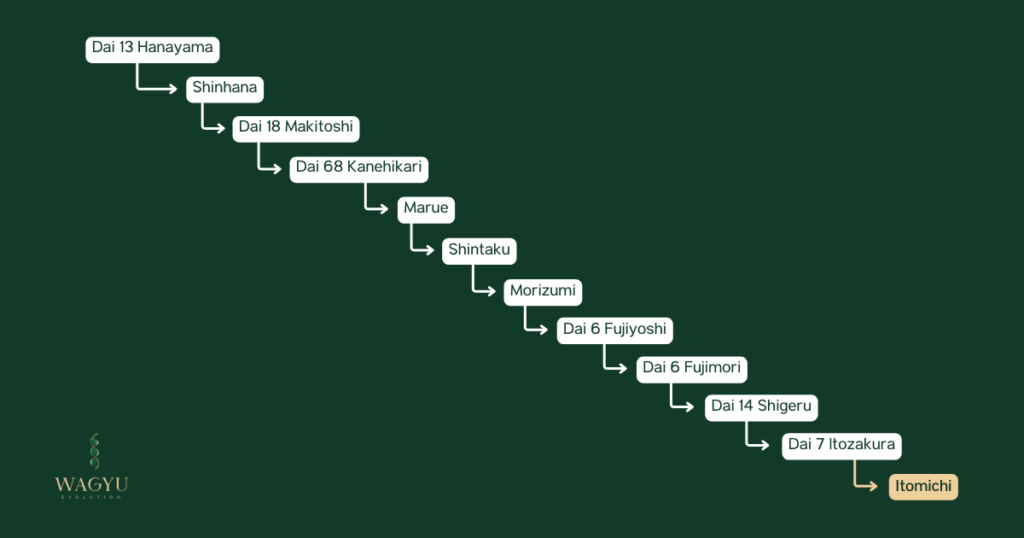
Dai 6 Fujiyoshi, a member of the Shinhana dynasty, gained renown as the illustrious ancestor of Dai 7 Itozakura, who achieved remarkable success and became widely acclaimed.
Residents of Okayama Prefecture strongly asserted that Dai 7 Itozakura can be traced back to the Okayama lineage. The reason for this is that Dai 7 Itozakura’s father (Dai 14 Shigeru) was born in Okayama. However, individuals from Shimane Prefecture strongly argued that Dai 7 Itozakura’s maternal lineage can be traced back to Shimane, indicating that he originated from there.
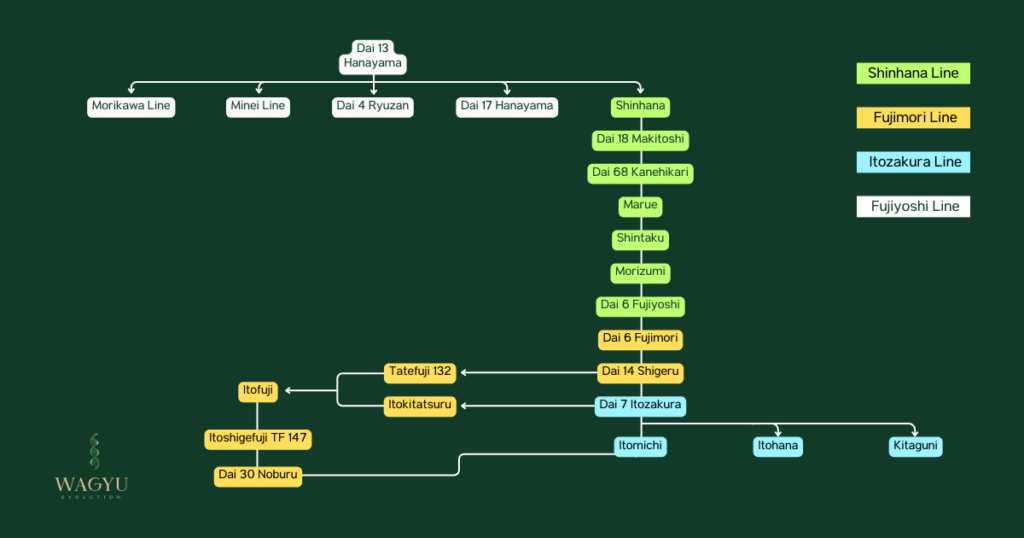
Breeders started referring to Okayama cattle, which have Dai 6 Fujimori and Dai 7 Itozakura in their lineage, as the Fujimori line. Similarly, the cattle from Shimane Prefecture, who have Dai 7 Itozakura in their lineage, are called the Itozakura line.
As a result of the conflict, the National Wagyu Registry Association (ZENWA) decided to categorize Dai 7 Itozakura as part of the Fujiyoshi line. They accomplished this by establishing the Fujiyoshi line as a subsidiary of the Shinhana line.
According to Mr. Shogo Takeda, the inclusion of descendants from Dai 7 Itozakura and descendants from Itofuji into the Fujiyoshi lineage is unsuitable due to their significant physical differences.
Genuine Wagyu breeders clearly understand this matter and are not perplexed by certain textbooks that primarily focus on the male lineage when discussing pedigrees.
This oversimplification is exemplified by juxtaposing the morphological attributes of offspring from Dai 7 Itozakura with offspring from Itofuji. The offspring of Dai 7 Itozakura exhibit a substantial physique, exceptional marbling, and possess excellent maternal qualities with high milk production. Conversely, the progeny of Itofuji display a very massive body frame and impressive marbling and excel in producing calves with high milk production.
The offspring of Dai 7 Itozakura have a substantial rib cage, weighing 450kg (±30kg). In contrast, the progeny of Itofuji have a narrower rib cage, weighing 500kg (±30kg).
It is crucial for breeders to thoroughly examine both the paternal and maternal lineage of the pedigree, as both sides have equal significance.
Itomichi, the renowned father of Takeda Farm and the son of Dai 7 Itozakura. Out of all the 1000 sons of Dai 7 Itozakura, Itomichi was the one of seven to surpass him in terms of development and marbling.
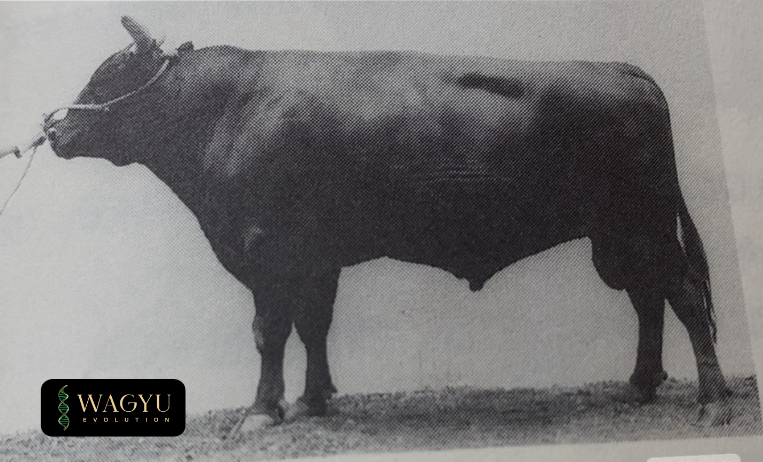
Itofuji
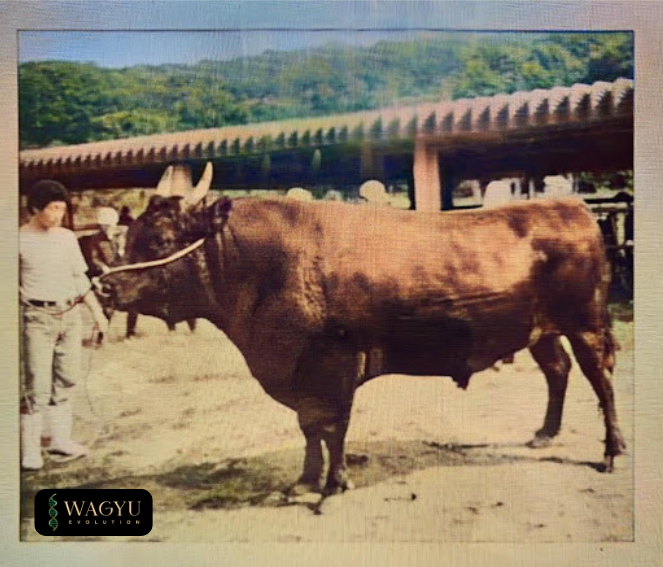
Itomichi
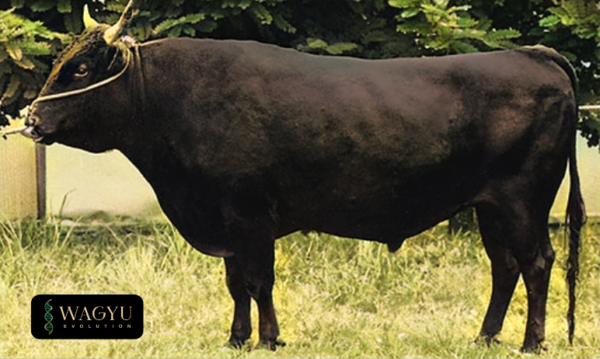
Itoshigefuji TF147
Shogo Takeda wanted to produce a bull with a large body frame and good marbling. Thus, he crossed Itofuji (Fujimori line- supersized) and Itomichi line (good marbling) resulting in their first male progeny born in 1995, which he later named Itoshigefuji. This bull was then designated as 50% Fujimori line, 25% Okayama line, 6.25% Itozakura line, 17.187% Shimane line, and 1.562% Kedaka line.
It is evident that, although being the sire and its offspring, Dai 7 Itozakura and Itofuji have rather diverse genetic traits from one another, and even more from Itoshigefuji.
Breeding plans regarding them as the same genetic line are therefore not a good idea. This is the reason you breeders have to see the Fujimori and Itozakura lines differently. Classifying Itoshigefuji TF147 in the Fujimori line.
The Role of Itomichi in Takeda Farms
For 12 years, Itomichi held the prestigious position of primary herd sire at Takeda Farms. His impact reverberated far beyond the farm’s gates. Here’s how:
Progeny Prolificacy:
- Mr Shogo Takeda exported Itomichi’s semen to the U.S, and exported Itomochi’s two sons, Itomichi ½ and Itoshigefuji TF147 making them all a part of the foundation sires in the USA.
- Itomichi’s legacy extends through his impressive progeny. According to AWA Digital Beef, he sired an astounding 145 listed offspring across 11 herds.
- These descendants inherited his superior genes, perpetuating the Wagyu breed’s excellence.
Economic Performance:
- Takeda Farms strategically bred Itomichi to enhance both meat quality and economic value.
- His contribution to larger-framed cattle with substantial muscle mass led to heavier carcasses, aligning with the farm’s goals.
Conclusion
It is crucial for breeders to thoroughly examine both the paternal and maternal lineage of the pedigree, as both sides have equal significance.Understanding the distinctions between the Fujimori and Itozakura lines is crucial for breeders aiming to optimize their breeding strategies.
The Fujimori line, characterized by its larger body frame, and the Itozakura line, known for its excellent marbling, each contribute unique strengths to the Wagyu gene pool. The example of Itoshigefuji, a bull that embodies both these lines’ qualities, illustrates the potential of strategic crossbreeding to achieve balanced traits.
As Wagyu breeders continue to refine their practices, the legacy of Itomichi and the historical context of his lineage will remain pivotal. As there is a lot more genetics to unlock and prove! in the Improvement of Wagyu genetics
References
Shogo Takeda, ‘TF 147 genetics explained’, in Australian Wagyu UpDate, August 2007
Kenichi Ono. 100 Greatest Wagyu in Japan. October 2024
https://wagyu.digitalbeef.com/
https://www.wagyuinternational.co/foundation.php
